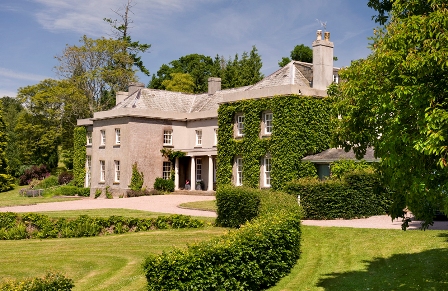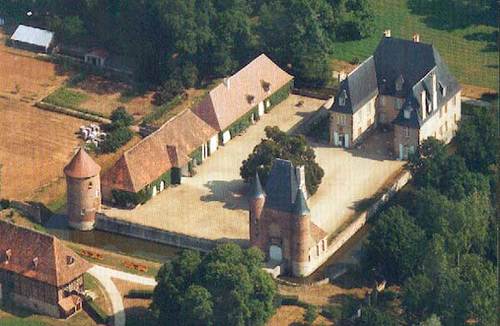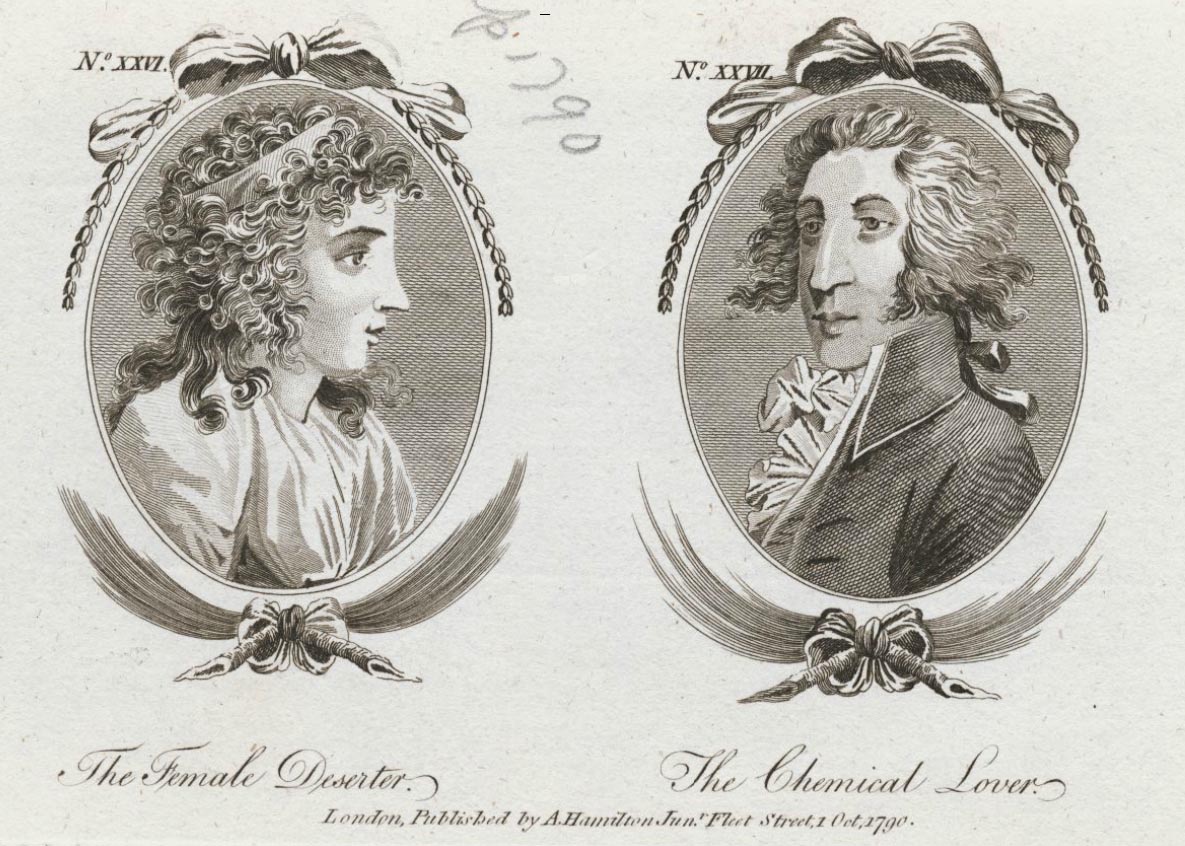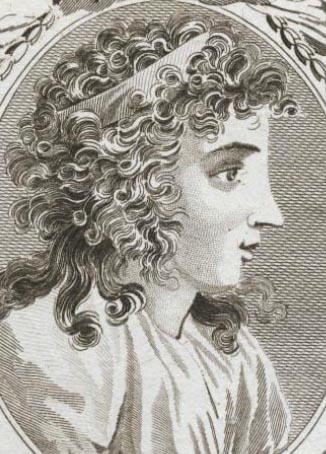Lydia Sheridan (née Fergusson)
c.1754 - c.1796
| Relationship to me: |
Great Great Great Great Aunt (by marriage) |
Gen -5 |
|
| Born |
28th April.1753. Baptised 3rd May in Corstorphine, Scotland
(see record) |
|
| Died |
8th Aug 1796 in Baltimore, USA |
|
| Age |
43 - see death
notice in the Baltimore Federal Gazette |
|
| Father: |
Captain John
Ferguson |
d.1767 |
| Mother: |
Lydia Cumber |
|
| Brothers: |
John - a captain in the navy |
|
| |
William - a captain in the army (witnessed Lydia's baptism
and wedding) |
|
| Sisters: |
Marion - married Dr. Smith |
|
| Married |
(1) Henry Fortick Sheridan m. 29 Jul 1770 in St Helen’s
Parish, Worcester, England. |
b.28 Jan 1746, Dublin, Ireland |
|
(2) Francis Newman (probably
de-facto) |
|
| Children: |
(1) Henry Augustus John Sheridan born 27 Nov 1771 in
Tiverton, Devon, England |
|
| |
another son, name unknown |
|
| |
(2) Jean Elisabeth
Francois Georges Newman
alias (Captain) Francis Newman |
1786 - 1851 |
| |
|
|
Note: a PDF version of this page may be downloaded by
clicking here.
Lydia Sheridan (née
Ferguson or Fergusson) was the daughter of Captain
John Ferguson of Chigwell, Essex1 and
Lydia Cumber. . She was baptised on 3rd May 1753 in Corstorphine, just outside
Edinburgh. She had two older brothers, John, a naval captain, and William, an
army captain, and a younger sister, Marion about whom nothing is known. Likewise,
nothing is known about Lydia’s childhood beyond the fact that her father
was naval commander of Scottish ancestry who seems to have spent most of her
childhood overseas. [Note: Lydia’s baptism
record states that the witnesses were Mr Walter Ferguson and Mr William
Ferguson, the said Captain’s sons. Perhaps John was misnamed Walter, or
perhaps Lydia had a third brother.]
Through most of the 1770s and
early ’80s, Lydia lived with her mother and siblings in Tiverton, Devon,
perhaps having moved there after her marriage. This took place on 29 Jul 1770
when Lydia married Henry Fortick Sheridan in St Helen’s Parish, Worcester2.
Based on evidence given at her divorce hearing, it appears that she and her
husband lived in Tiverton with her mother and family after their marriage.
The following year on 27th
Nov 1771 Lydia gave birth to a son, Henry Augustus John Sheridan, in Tiverton.
She had a second son by Henry Sheridan about whom nothing is known.
On 23 May 1772, Henry Sheridan
was commissioned into the British army as a lieutenant in the 31st Regiment3.
In 1776 he was ordered to America and five years later, after being promoted
to the rank of Major, was in command of the New York Volunteers, a provincial
loyalist regiment that had mustered in New York City in 1776. He and the New
York Volunteers were highly distinguished at the Battle of Eutaw Springs in
17814.
In early 1784, during Henry
Sheridan’s continued absence, Lydia became associated with the Newman
family when she began an affair with Francis Newman
who was 6 years her junior.
Most of what is known about
their affair comes from the testimony of witnesses at Lydia’s trial published
by Gale Ecco under the title “The
trial of Mrs. Lydia Sheridan, wife of Major Henry Sheridan, for adultery with
Francis Newman, Esq., tried in the Bishop of London’s court, Doctor’s
Commons”. Their evidence is summarized
separately, but much of the following outline is based on that evidence.
Following her husband’s
posting to America in 1776, Lydia lived with her mother and siblings in Tiverton,
Devon. A Mrs Brewer who came from Tiverton and whose husband ran a pub in Plymouth
between 1780 and 1785, testified to having known Lydia since the early 1770s
when she and her husband had come to live there. They had lived with Mrs Fergussone
(Mrs Sheridan’s mother) for two or three years until Major Sheridan had
been sent on service abroad [to America] after which Mrs Sheridan continued
to live with her mother. She was still living with her mother when Mrs Brewer
left Tiverton around 1780. 
Sometime prior to April 1784,
Francis Newman and his wife Frances
were living in rented rooms at Fursdon
House5 in the Parish of Cadbury, Devonshire
about 6 miles south of Tiverton (not be confused with North and South Cadbury
in Somerset)6. On 7th
April, Frances gave birth to Frances
Charlotte Newman in Tiverton. Just one month later, in May 1784, Francis
left Frances to begin a new life with Lydia7.
How it was that Francis and Lydia met and fell in love remains unknown, but
there can be little doubt that Francis was unhappy in his marriage and that
Lydia was lonely in hers. From the evidence of her later divorce proceedings,
it seems likely that Francis was the dominant partner and that she had a more
neurotic and submissive personality, appearing to be in a constant state of
stress as to whether the scandal of their relationship would be discovered or
that Francis might leave her. Not surprisingly, she also worried about her two
abandoned children, who presumably remained with her mother in Tiverton.
By October 1784 the couple
were living together (with a servant) in Lowerbank’s Hotel in St. James’s
Street, London. Early the following month, they rented rooms at the house of
Mrs Barker in Green’s Row Chelsea. From December to the middle of the
following February, they moved into Osborne’s Hotel at the Adelphi (not
far from the Strand) before moving back to Mrs Barker’s rooms.
At the time the couple first
moved into Mrs Barker’s rooms, she thought they were man and wife, but
subsequently discovered the truth when Francis Newman was away for a few days
during which time Lydia “became so much agitated that [Mrs Barker] was
fearful of leaving her alone” and that gradually she “drew from
her a confession that she was not married to Mr Newman.” Thereafter Lydia
would often converse with Mrs Barker about her children and they became such
good friends that after the couple had left for France, Mrs Barker received
“pressing invitations” from Lydia to travel over and visit them.
After the couple left Mrs
Barker around 29th April 1785, they took an apartment somewhere near Moulins
in the heart of France. It appears that that they took rooms at the Château
le Riau (photo below) near Dornes, some 15km north of Moulins, which was owned
by Jean-Antoine Charry, Marquis des Gouttes8.
Charry later became the godfather to Lydia’s son, Jean
Elisabeth François Georges Newman, when he was baptized in Moulins
Cathedral in February 1787.

Note: David Chudleigh (a descendant of Lydia) speculates that
Charry, who was commandant of the French squadron at Louisburg in 1758, might
have been taken as a prisoner of war by Lydia’s father, Captain John Fergusson,
following France’s defeat there that year, and that (as was customary
at the time) he might have been lodged with the Fergusson family until the end
of the war some five years later. If this was the case then Lydia would have
known him from childhood and might explain why she and Francis chosen to head
for Moulins in order escaping from the scandal of their affair in England. This
possibility is not supported by Charnock's Biographia Navalis which claims that
Captain Fergusson “remained in the same station during a considerable
space of time” after the siege of Louisburg in 1758. A similar theory
has also been put forward that it was Francis who came to know Charry during
his childhood when was lodged with a Major John Mompesson, a friend of Admiral
Boscawen and relative of Francis’s grandmother Eleanor
Mompesson.
Some six months after leaving
England, Lydia fell pregnant and in July or August the following year, her appeals
to her erstwhile landlady Mrs Barker bore fruit when Mrs Barker arrived at her
doorstep. According to her testimony, Mrs Barker arrived at Lydia’s apartment
in or around July 1786 and the following day Lydia gave birth to a baby boy
whereafter Mrs Barker remained with the couple for a further four months. Throughout
this time, Lydia lived in a state of nervous tension, frequently telling Mrs
Barker that “if Major Sheridan or any strange gentleman should enquire
for her, to say that she (Mrs Barker) knew nothing about her.”
If Mrs Barker actually arrived
the day before the birth of Lydia’s baby, then it must presumably have
been mid-August and not July. At any rate, it seems that the baby was hurriedly
baptized in the chateau immediately following its birth for fear that it might
not survive.
Presumably the baby’s
sickliness delayed a formal baptism for some months since it was not until February
1787 that he was taken to Moulins for the formalized ceremony to be performed.
This seems to have been quite a grand affair judging by the baptismal record
which has been translated into English as follows:
In the year of 1787, and
on this 7th day of the month of February was baptized under authority of myself,
Rector of the college of Moulins by permission of the Pastor:- JEAN
ELISABETH FRANCOIS GEORGES, born August 16th 1786 of the Parish of Dorne
at the Palace of the said place, Diocese of Nevers, son of the marriage of
the High Lord FRANCIS NEWMAN, Knight, Baron and Lord of Cadbury, Sparkford
and Lord and Sovereign of Fullen, besides his other lands, and My Lady Nioman
Furgusson9 his wife, of that Parish, and
having doubt of the validity of the private baptism which was administered
at the said Palace, because of the nearness of death. The Godfather was the
High Lord John Anthony de Charry, Marquis des Gouttes, Chief of Cadres of
the Marines, and the Godmother was the High Lady Elizabeth Claudinede Neuchaize,
Abeyesse and Countess of Alix. Both Godfather and Godmother have, with me,
signed as well as the father here present. (S)Marquee des Gouttes; (S) de
Neuchaize, Abeyess and Countess of Alix; (S) F. Newman, Sir and Baronet; (S)
Villefort, Vicar of St. Peter; (S) Berrut Collegii, Rector.
One wonders why Francis felt
it necessary to pass himself off as a knight and Lord of Cadbury, Sparkford
etc., and whether he was simply in the habit of self-aggrandisement (being twice
been described as “the articulate Francis Newman” in depositions
at Lydia’s trial). But perhaps he simply felt it expedient to give himself
a title in order to fit more comfortably within the social set that that he
was engaging with in Moulins.
Francis’s pretentions
were summarily deflated when early in February – perhaps no more than
a few days after the baptism - his and Lydia’s idyll was broken by a knock
at his door announcing the arrival of a Mr William Loveridge, a solicitor acting
on behalf of Henry Sheridan. In his testimony at Lydia’s trial, Loveridge
said that when he asked for Mrs Sheridan “Francis Newman appeared much
embarrassed and said that he knew of no such person” but quickly changed
his mind when Loveridge threatened to leave the documents that he had come to
serve upon her with the Moulins authorities. Francis then introduced Loveridge
to Lydia and allowed him to serve his papers on her, after which the couple
invited Loveridge to stay for dinner during which they showed their baby boy
to him. Lydia once again showed signs of stress “repeatedly in conversation
(she) said that she was determined to live and die with the said Mr Newman,
and never again live with her husband”. Loveridge remained in Moulins
for two more days “during which he was several times with the said Mr
Newman and Mrs Sheridan and they both repeatedly entreated [him] not to divulge
their situation, for that they were looked upon as husband and wife at Moulins
and visited, and were visited, by the principal people of the place”.
Loveridge duly reported back to his client
who must have begun legal action without delay.
Presumably, the facts about
the couple leaked out into the Moulins community making their continued residence
there untenable. At any rate, sometime in the next 12 months, Lydia and Francis
and baby returned to London taking lodgings at a house in Brompton Row, Hyde
Park where they were discovered in February 1788 by the aforementioned Devonian,
Mr Brewer. Mr Brewer was by then running a coffee house in Pall Mall that was
sometimes frequented by Major Sheridan who, having heard that Lydia was back
in London living in Brompton Row, and having discovered that Mr Brewer had known
her during the time that he lived in Devon, had asked Mr Brewer to go and verify
that it was indeed Lydia who was living there.
The last written testimony
taken for the trial was from Mrs Brewer whose deposition was drafted in March
1788 which repeated much of her husband's testimony. Shortly after, in May 1788,
the trial (held at the Bishop of London’s Court
in the Doctor’s Commons) was summarily
concluded, with Major Sheridan being granted his divorce “by reason of
adultery”10. Three months later in
August 1788 two year-old John, Lydia's son by Francis, was baptised into the
church of England - see copy
of entry (supplied by Harold Biggs, Aug 2019).
It seems that Lydia’s
divorce had subsequently to be ratified in the House of Lords since a record
of the proceedings of that House relating to the case can be found on British
History OnLine's website under a date heading of March 1789. Of
passing interest, the House of Lords' records include the testimony of a Sarah
Sell who was obviously the same Mrs Sarah Barker who had testified at the Doctor’s
Court hearing the previous year, and whose testimony was preceded by one from
a Thomas Sell who was at that time a gardener working for Mrs Barker. The pair
must have married in the interim. Of more specific interest, it appears that
by the time of the House of Lord’s hearing, Mrs Sell had forgotten some
of the details of her previous evidence, since she now claimed that on the 15th
August 1785, she had “seen Mrs. Sheridan and Mr. Newman at a place called
Caen, about twelve miles from Moulines, in France, and the next day, the 16th
of August, Mrs. Sheridan was brought to-bed of a son." In fact, Caen is
in northern France and nowhere near Moulins, and Lydia’s son was born
on 16th August 1786 (not ’85). Presumably no-one troubled to dispute the
discrepancies in her two stories, or perhaps the transcript was in error. Presumably
Sheridan’s divorce bill was passed by the Lords.
When the Gentleman's Magazine
reported on the case in 178911, it noted
that in addition to obtaining his divorce in May 1788, Major Sheridan also brought
an action against Francis Newman for "criminal conversation with Lydia
Sheridan" through the Court of King's Bench which, in late 1788, awarded
him damages of £200012 against Francis
Newman (see British
History OnLine for details). Presumably Francis must have found the funds
to pay these damages, though it might be wondered how he was able to do so at
a time when he was at the same time fighting off creditors in the Chancery Court.
Even after the House of Lords had completed
its deliberations, Lydia’s ordeal of public humiliation was not yet over.
The following year, the Town and Country Magazine published an article titled
"The Female Deserter" and "The Chemical Lover". Town and
Country Magazine was a popular London journal published through the second half
of the 18th century which included a gossip section called "Histories of
the Téte-à-Téte Annexed" under which the article about
Francis and Lydia appeared. Portraits had to be more or less representative
of the subjects since the subtitles rarely contained full names but made use
of witty monikers that described the couple in question. At any rate, the caricature
of Lydia below is the only representation that we have of her.

Caricatures of Lydia and Francis as published in Town
and Country Magazine, Sep 1790
The article reflects the biases
of the time in that it describes Lydia as “having more than a moderate
portion of personal charms [but] no pecuniary allurements to attract prudent
or mercenary lovers”, going on to portray her as a temptress who beguiled
Francis into beginning their affair.
Little more is known about
Lydia following her divorce beyond the fact that she and Francis remained together.
It would be surprising if they did not at some stage get married, but so far
there is no evidence that they did. Nor indeed is there any evidence that Francis
was able to obtain a divorce from his wife (and first cousin) Frances.
Lydia and Francis must have
stayed together in England for the next few years during which they lived rather
peripatetic lives as Francis pursued, and was pursued by, various relations
and business associates through the courts. In late 1789 they were reportedly
living in Greenford, Middlesex; later they were living in Broad Street, London,
before moving to Shudy Camps near Cambridge sometime around November 1791.
Francis was still in England
in February 1794, when he signed a will in which he “bequeathed the residue
of his estate and effects to his reputed son, Elizabeth Francis George Newman”13.
Presumably he took this step in anticipation of his (and Lydia’s) departure
for America and the hazardous journey across the North Atlantic.
The couple probably made their
move later in 1794, carrying sufficient funds with them to purchase the “La
Grange” tobacco plantation in Maryland shortly after their arrival. It
was there that, no more than two years later, “Lydia, wife of Francis
Newman was buried, Aug. 8, 1796, age 38”14.
In fact she must have been 43 - a young age even by the standards of the day.
Post Scripts:
Particular thanks to David Chudleigh, a descendant
of Lydia, for much help with sourcing information about her.
Many questions remain to be answered about Lydia and her relationship
with Francis Newman.
- When was she born and how much older was she than Francis?
- Did the couple ever marry? If so, did Francis obtain a divorce
from his first wife Frances?
- What became of Lydia’s children before and after she
left for America?
- After all the financial difficulties, losses, disputes and
court cases that Francis Newman went through (not to mention punitive damages
paid to Henry Sheridan), where did the money come from to pay for Francis
and Lydia’s travel expenses and rented lodging over so many years, and
not least the purchase of an estate when they landed in America?
A separate point of interest: Lydia’s name appears a
couple of times in the “Records
of the Clan and Name of Fergusson, Ferguson and Fergus” , including
an obscure reference to the fact that “Lydia Fergusone, afterwards Sheridan,
appears as an authoress in the printed catalogue of the British Museum.”
It is not known what this printed catalogue related to.
Footnotes:
- According to the
Gentleman’s Magazine , 1789 page 1107, when reporting on Lydia’s
divorce case, Major Sheridan was from Chidwell Essex. This does not seem quite
consistent with his Scottish ancestry, nor with the fact that Lydia was married
in Worcester.
- The place and date of Lydia's marriage comes from the Journals
of the House of Lords, Volume 38 by Great Britain House of Lords.
- Ref: British officers serving in America 1754-1774; compiled
from the "army lists", 1894.
- Ref: The Historical magazine, and notes and queries concerning
the antiquities, history, and biography of America, C. Benjamin Richardson,
1864.
- Fursdon House has been owned by the Fursdon family since
c.1250 - see http://www.fursdon.co.uk.
Hence it may be assumed that Francis was renting rooms there.
- Evidenced from a hand-written inscription in the Newman-Roger’s
Bible (not from trial witnesses).
- According to Chancery
Proceedings C12/629/31 (pages 43/44), in or about the month of May 1784,
Francis Newman left his wife and remained separated from her until October
1784 when he and she met in London; and that sometime around the beginning
of 1785 he "with the privity consent and approbation of" Frances
Newman, left her and went to France.
- For information on Château le
Riau and Jean-Antoine Charry, Marquis des Gouttes, see http://www.chateau-du-riau.com.
- Presumably Lydia had adopted the double-barrel name of Newman-Fergusson
and “Nioman” was a mistranscription or mistranslation of “Newman”.
- Testimonies from the trial of Lydia Sheridan have been published
by Ecco under the title "The
Trial of Mrs. Lydia Sheridan, Wife of Major Henry Sheridan, for Adultery with
Francis Newman, Esq. Tried in the Bishop of London's Court, Doctor's Commons".
- For the Gentleman's magazine, see Google Books at http://books.google.com/books/about/The_Gentleman_s_magazine.html?id=D17PAAAAMAAJ
page 1107.
- £2000 was a very considerable sum in those days equivalent
to several hundreds of thousands in 2012 - see http://www.measuringworth.com/.
- See
TROWER AND SMEDLEY v. Cox. Prerogative Court, Trinity Term, 2nd Session, 1822.
Francis’s first will has been sighted by Jerry
Gandolfo who’s summary of it is presented on Francis
Newman’s page.
- The Maryland Genealogical Bulletin: Baltimore City Dead
– Prior to 1806.
Page rewritten 21 May
2012
Page created: 3rd Dec 2011.



